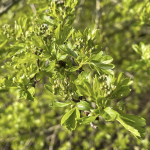On tribes and our collective wellbeing
Hello, I hope your Sunday is soft today. Mine is dedicated to reconnecting with my tribes and re-potting the first small plants I grew from seeds. So it feels very warm and nurturing. Yes, we are still experiencing low temperatures in the UK and expect below zero next week. I organised my books and cupboards yesterday, so I have a few more scarves out!
Last week, I posted about my new Jewel Orchid and this week, I went to work worrying: how will I ever find good moss for her in my part of town? I am so far away from fancy florists! And, as it happens, moss showed up precisely at the gates of my counselling service office – so generously that I was able to cover the orchid and all other small potted plants in our house. I was once told by an Indian lady that in India if you are looking for something lost, you need to call it. Just call it in your inner voice – and the missing item will show up. It makes sense, as we tap intentionally into our subconscious, but I like to toy with the idea that I can call the universe, and it will provide. And this week, it did!
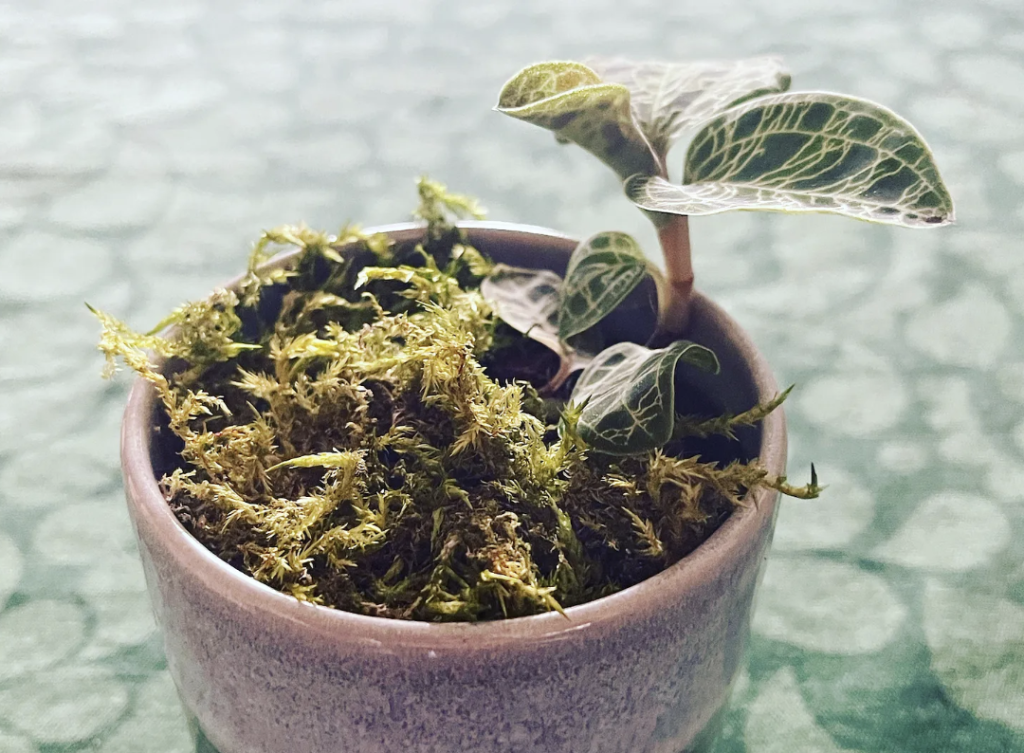
I find mosses magical. They are so tiny, yet so important for our ecosystems (Sarah Venn, the leader of Edible Bristol, took a wonderful photo of them and posted it on Instagram this week). In the UK especially, the emergence of quiet mosses in winter months is stunning – they are everywhere: in small cracks of the pavement (allowing soft pockets of comfort for lost dandelion seeds to find a home for the upcoming year), in hidden corners of sheds or on branches of bushes in the park, and on the soft carpet of woodlands. This is the type of moss that found me this week.
I love reading about mosses too. Robin Wall Kimmerer, a massive advocate of responsible agriculture and respect for Nature, wrote a magical book about mosses. Annie Martin published a fantastic introduction to moss gardening (once you read it, there is no way back!;)) Elisabeth Gilberth’s “The Signature of All Things” is so lush as it features mosses at the centre of the main character’s liberation and passion for Nature.
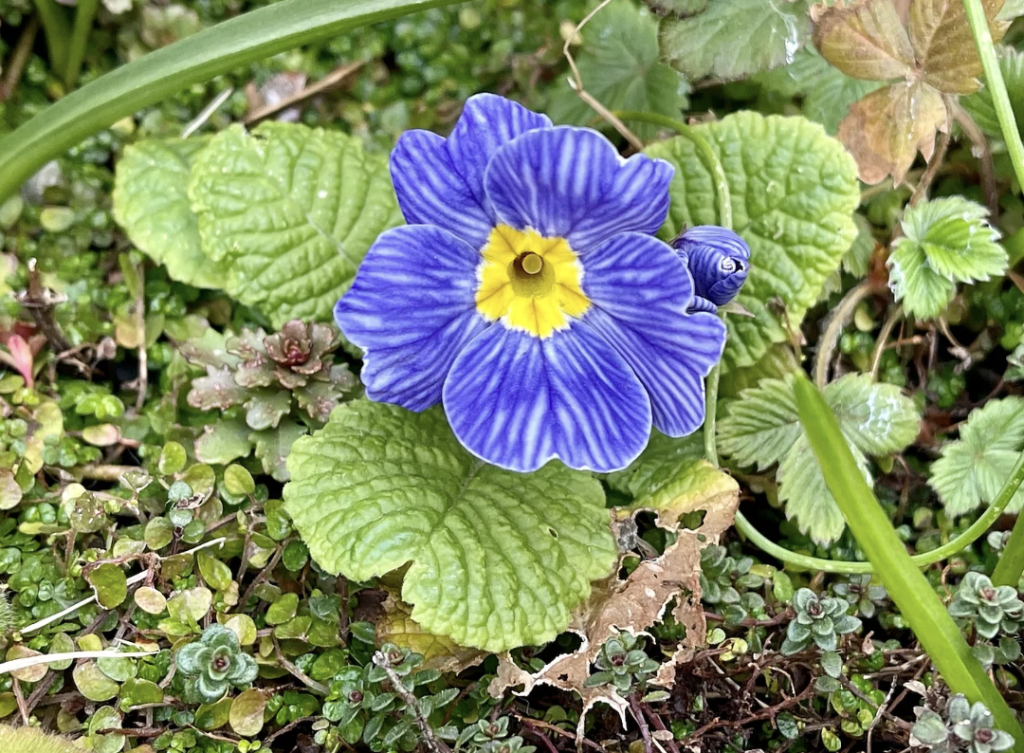
I spend this week reflecting on my tribes. Reconnecting with female stories and reconnecting with my friends after a few years of intense studies but also many Brexit and pandemic-related challenges. It is nice to come back to those steady threads of meaning running under our daily life, connections that, even when loosened by the busyness of the modern world, continue to keep us all connected. Moss is a little bit like that. When you pick it, you can pull it all apart and fit it into the shape of your pot, knowing that it will find its own connections. It will find its tribe. It will grow new connections and stay healthier and stronger together.
I think a lot about online echo chambers too. The fact is that, just like in our offline networking, we tend to get attracted to similarly-minded people. Sometimes this results in healthy and nurturing spaces, but if we happen to feel unwell, we amplify those feelings by choosing toxic tribes too. Sometimes, people with mental health challenges may immerse themselves in toxic online environments and conspiracy theories. And since this challenging period can happen to anyone across a healthy lifespan, too, it can come as a surprise to friends and family.
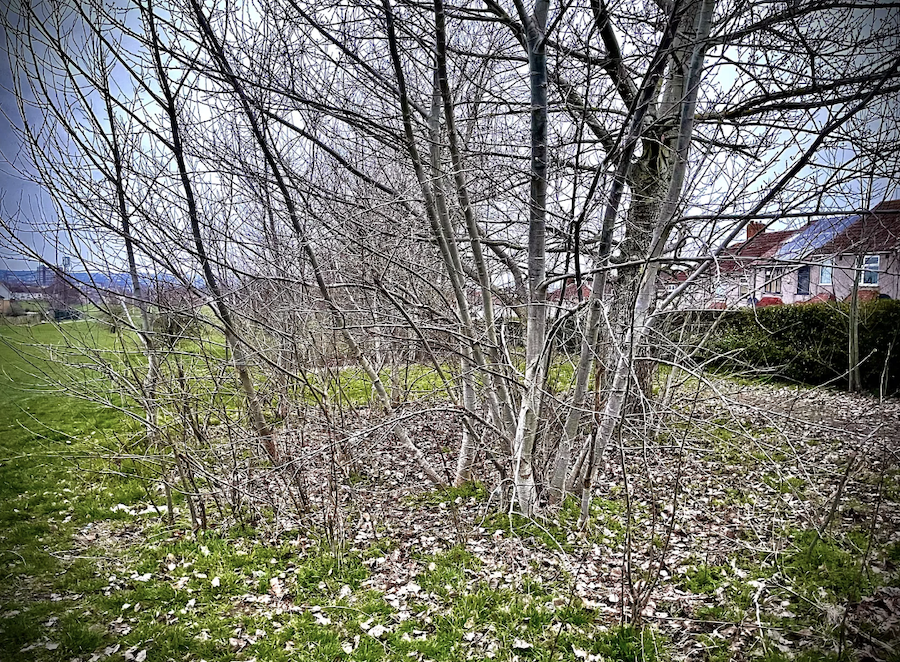
That is exactly why it is so critical to reconnect with supportive, kind and nurturing communities (offline and online). We need each other, especially during challenging times. We need to be able to ask for help, lean on others and trust that they will keep us safe when we ourselves run out of emotional resilience, resources and contingency to do it ourselves. There is a family of trees in my local park, which always reminds me of this, standing still, united – no matter how battered by dogs and playing children looking for a perfect stick. There is even a row of teen babies on the side of the park with a path we have carved out through our dog walks between them and their parents. That young group emerged during the first lockdown year, so it serves as a symbol of a new mini-forest emerging from such a difficult time for so many. We all need a sense of connection to a healthy, supportive tribe.
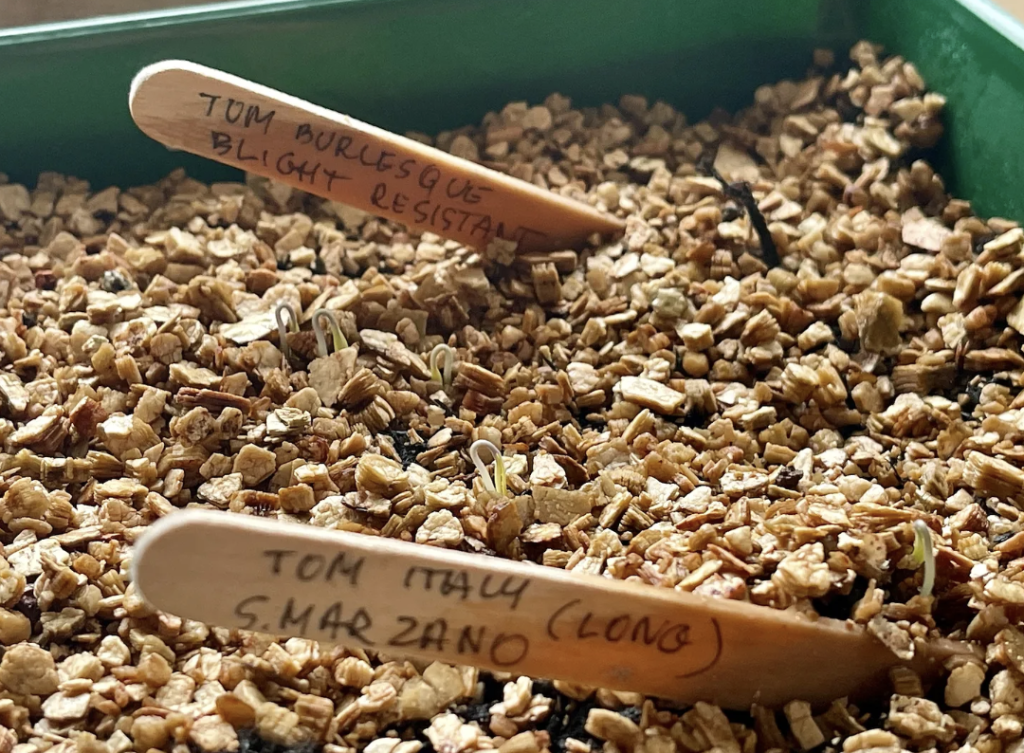
Another big Nature event in the household is the emergence of tomato plants. After a week of seed germination, our babies are out! I get so childishly excited when I see the first few new signs of life emerging from the soil. There is something so intensely magical about the idea of a dry seed waiting weeks, months, years, even for the perfect circumstances to wake up to life again. A few days later, I have to move those plants from the tray to smaller pots, and soon they will turn into strong plants bearing the fruit we all so crave in and outside of the EU at the moment.
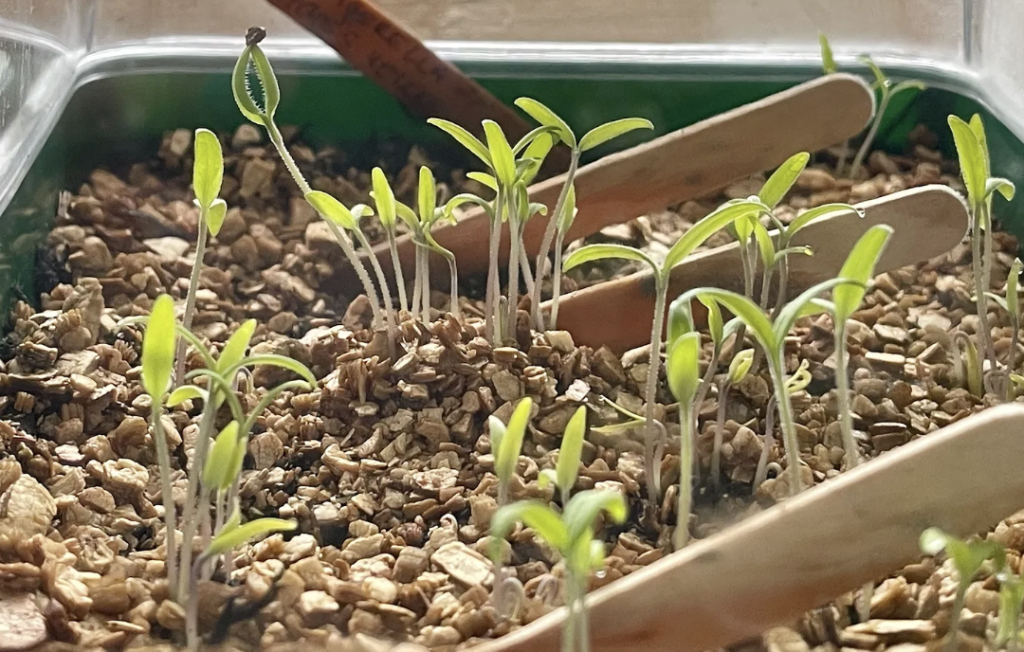
I am enjoying this slower pace of growing tomatoes this year. Every single step is a bit of a battle for me – we usually get larger plants in the local garden centre, and I am so clumsy when moving those babies from one container to another! Yet, the effort, the patience it takes, and the visible progress are a such joy. I think going back to Nature reminds us that time doesn’t have to but can be linear. In the new world of digital media, the notion of linear time is disturbed by the algorithms ruling when, how often and how soon we may access something posted by others. It is very rare to see search results or social media streams in chronological order. So it can feel so soothing and calming to come back to Nature’s rhythm and cycles of life.
Reflection:
Mapping out our social tribes is an exercise used both in coaching and counselling, so today, I would like to offer it to you. For good digital wellbeing, it is incredibly important to proactively manage who you subscribe to online, who you connect with and who is allowed to see your content online too. We cannot blame Facebook for that one toxic friend who constantly bullies us in our personal updates – just like in our offline reality, we need to manage our boundaries and reflect on our relationships online too. In fact, I prefer to think that the medium and aspect of reality are purely coincidental: we need to manage our relationships actively. And so we do reflect on, reconnect with and nurture our tribes. Here are two approaches I use:
- Joshua Fields Millburn and Ryan Nicodemus (The Minimalists) offer a clear framework for effective and meaningful management of our relationships in their book “Minimalism”. They suggest reflecting on all our relationships and grouping them into three tribes – closest (people we value and need the most, we should be in touch daily or weekly), secondary (my clumsy word for people who are close or important to us but in terms of trust maybe fall outside of the primary group – we may be in touch daily, but we feel we should have a meaningful check in at least once a month), and finally everyone else. Even if you have a few distinct tribes (for example, private and professional contacts), use this idea of proximity and priority to map out your tribe. When you list those people in three columns on paper, please be careful: you need to prioritise people in terms of their actual significance to you. When you list everyone, check the list firmly: where are those people now, and where do you want them to be? That one toxic friend maybe should not be on the list or at least move to the third outer circle. A neighbour you talk to daily possibly needs a weekly check-in (secondary group), so you can text your sibling instead. Reflect honestly: what do you need to do? What needs to change for your tribe to be nurtured and nurtured? (I like to do this in circles on paper – I review my tribes every few years – some people remain steady or arrive closer, and others shift and move in my constellation as I change my needs and priorities too.)
- Speaking of trays: in counselling, we use sand trays and small items (or in eco-therapy small items outdoors) to map out our challenges. For deeper psychological exploration, you need a trained professional. However, for a simple personal reflection on your tribes, you can use the same method. Find a flat surface or play sand, and using small items, map out your tribe. At first, just do it intuitively. Then take a moment to reflect on each relationship – how is it now, and how would you like to be to support your wellbeing? Just by moving items around, you may notice a shift in yourself. Remember to consider digital communication in your reflection. Who needs to see your most personal messages? Who needs to be updated on important events in your life? Who may be causing tension, and what needs to be discussed, improved or resolved? How can you use digital tools to reconnect, grow and nurture your tribes?
(I need to repot the baby tomatoes, so I am off. I wish you a light rest of the weekend and fun mapping out the kind people in your life!)
This post was originally posted on Substack in our Syl’s Liberation Psychologies Newsletter.

